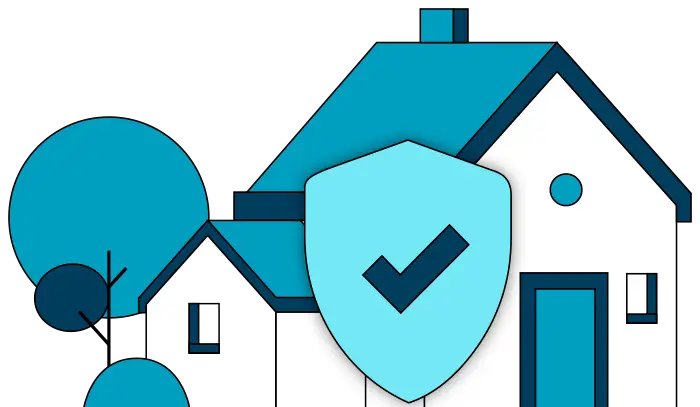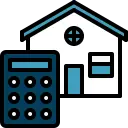- Loss of use coverage is meant to reimburse the homeowner for any additional living expenses that are incurred as a result of covered damage to the home.
- The loss of use coverage typically has a limit that is around 20% of the dwelling coverage limit.
- The duration of loss of use coverage can vary depending on the limits in the policy and how quickly repairs can be completed.
What is Loss of Use Coverage?
Loss of use coverage is section D in a homeowners insurance policy. This section is also known as additional living expenses coverage. The purpose of the coverage is to protect the homeowner in the event that additional expenses are incurred by the homeowner to live their life while their home is being repaired as a result of damage that is covered under the policy. It is meant to protect the homeowner from accumulating secondary bills as a result of covered damage.
There are three separate areas of coverage under the loss of use section. These three areas include- additional living expenses, fair rental value, and prohibited use.

Additional living expenses
The additional living expenses area of loss of use coverage is mainly what this section of a standard home insurance policy is about. If damage occurs to the home that is so severe that the homeowner is forced to relocate to a hotel or other accommodations temporarily, this section of the policy will kick in with the intent to help the homeowner maintain their normal living standards.
The policy will pay for essential living expenses that are over and above the normal monthly amount the homeowner spends on these expenses. Expenses that may be included are:
- Hotel stay
- Gas
- Food
- Temporary rental car or home
- Transportation
- Daycare
- Pet boarding
- Storage unit
While a standard policy will pay for these additional expenses, the insurer will only pay for reasonable additional expenses. For example, say the homeowner’s mortgage is $1,000 a month for a two-bedroom house. The insurer will not pay out for the homeowner to stay in a luxury 4-bedroom villa that costs $4,000 a month. It may also be the case that the insurer may pay out up to that $1,000 and the homeowner is left paying the additional $3,000.
Some larger insurance companies like AIG or Chubb offer unlimited coverage D loss of use limit in their standard policies. This means these insurance companies will reimburse all of your reasonable expenses while your home is being repaired or rebuilt. However, most companies typically impose a 20%-30% limit.
The insurance company will only pay for necessary living expenses. They will not pay out, under the loss of use section D of coverage, for discretionary expenditures. Discretionary expenditures are any expenditures that are not necessary for the homeowner to maintain their normal standard of living. An example of where the policy would pay out is in terms of meal expenditures. Say a homeowner normally spends $400 per month on food and due to an accidental fire the house is uninhabitable for a month while the repair company repairs the damage. During this month, the homeowner is forced to eat out more than normal, bringing their monthly food bill to $600 per month. The insurer would reimburse the homeowner for that $200 of additional food expenditure, under section D loss of use coverage.
Fair rental value
This portion of the loss of use coverage kicks in when a homeowner normally rents out a room or home. If damage occurs to the home and the room or home that is normally rented becomes uninhabitable for a period of time, the loss of use coverage will reimburse the homeowner for the normal rent payment which would not be collected while repairs are being done. It is important to note that this portion of coverage will only last at the very longest, 12 months.

Prohibited use by civil authority
This portion of the loss of use coverage in a standard homeowner’s insurance policy comes into play when something like a natural disaster occurs and the local, state, or federal government orders the homeowner to evacuate and relocate to a new accommodation for a temporary period of time. Typically, under this subsection of section D, the benefits for additional living expenses incurred will only last for up to two weeks.
Frequently asked questions
How long does the loss of use coverage pay out?
As you can see in some of the subsections above there are different limits to how long the reimbursements under loss of use coverage will pay out. Prohibited use is two weeks or less, and fair rental value is twelve months or less. Under a standard claim that involves additional living expenses, there is no time limit cap for how long the benefits will pay out. The important thing to keep in mind is that the maximum coverage limit stated in the policy may be reached before the time limits have been reached. For example, if a claim occurs that involves $500 of additional living expenses each month and the maximum coverage limit is $2,000, the maximum coverage limit will be reached in four months and cease to pay beyond that. The repairs may also be completed prior to any coverage or time limit being reached. The policy will cease to reimburse a homeowner once repairs have been completed.
What happens if the damage is so severe that the homeowner permanently relocates?
If a homeowner ends up permanently relocating as the result of damage that is covered under the policy. The insurer will reimburse the homeowner under loss of use coverage until the homeowner is settled into their new permanent location or until benefits are exhausted. Whatever comes first.
What is the maximum loss of use coverage limit?
Typically, the maximum loss of use coverage limit is 20% of the dwelling coverage. This means that if the dwelling coverage maximum limit is $300,000 then the loss of use coverage limit will be $60,000. Some companies will provide higher limits to homeowners as well.

The loss of use coverage claims process
There is important work to be done on the homeowners end in order to be reimbursed under loss of use coverage. The claims process usually goes as follows:
- Hang on to all receipts. This is crucial in order for the insurance company to see your expenses and approve the reimbursement for additional expenditures
- File the claim. Fill out the claim form that is required by the insurance company and breakdown what your typical essential monthly living expenses are like. The insurer will most likely ask for some sort of proof in the form of a bank or credit card statement or receipts
- Send the insurer any receipts that are from normally occurring essential expenditures. this will give the insurance company the ability to see what the normal cost of living is for you and match it up against the additional expenses incurred during the loss of use period
An important note is how claims are paid under this section of coverage. Most insurance providers will reimburse the homeowner at the beginning of the month for additional expenses that were incurred in the previous month. If the homeowner is really strapped for cash or the necessary expenses are quite large, the homeowner may be able to get the reimbursement check up front to pay for expenses during the period.
Another note is if the fair rental value subsection is relevant. Some additional steps will need to be taken by the homeowner. The insurance company will most likely require documents such as a lease agreement, tax forms, and additional banking information in order for the company to determine that the property or room was rented out as a source of income to the homeowner.

